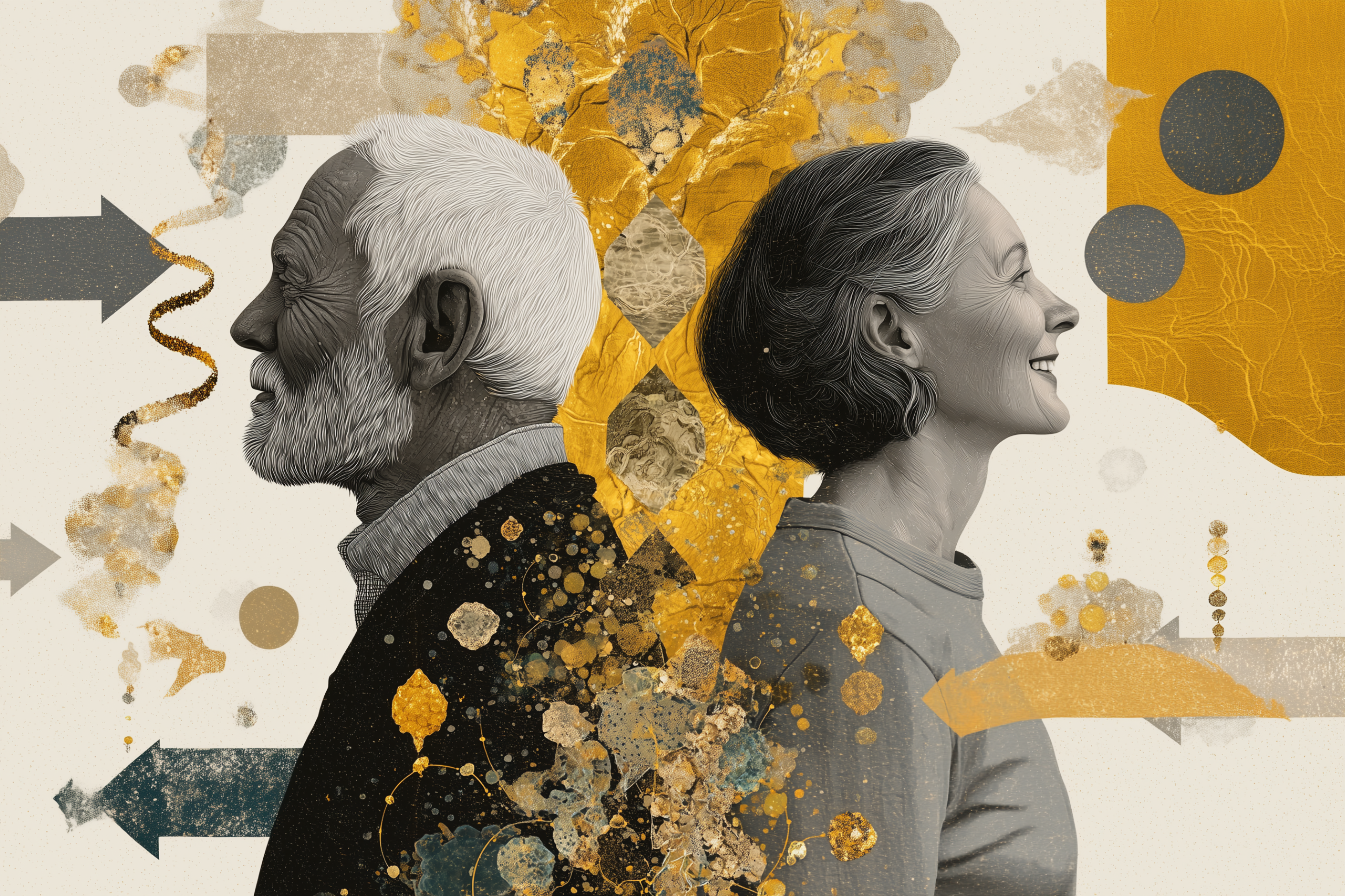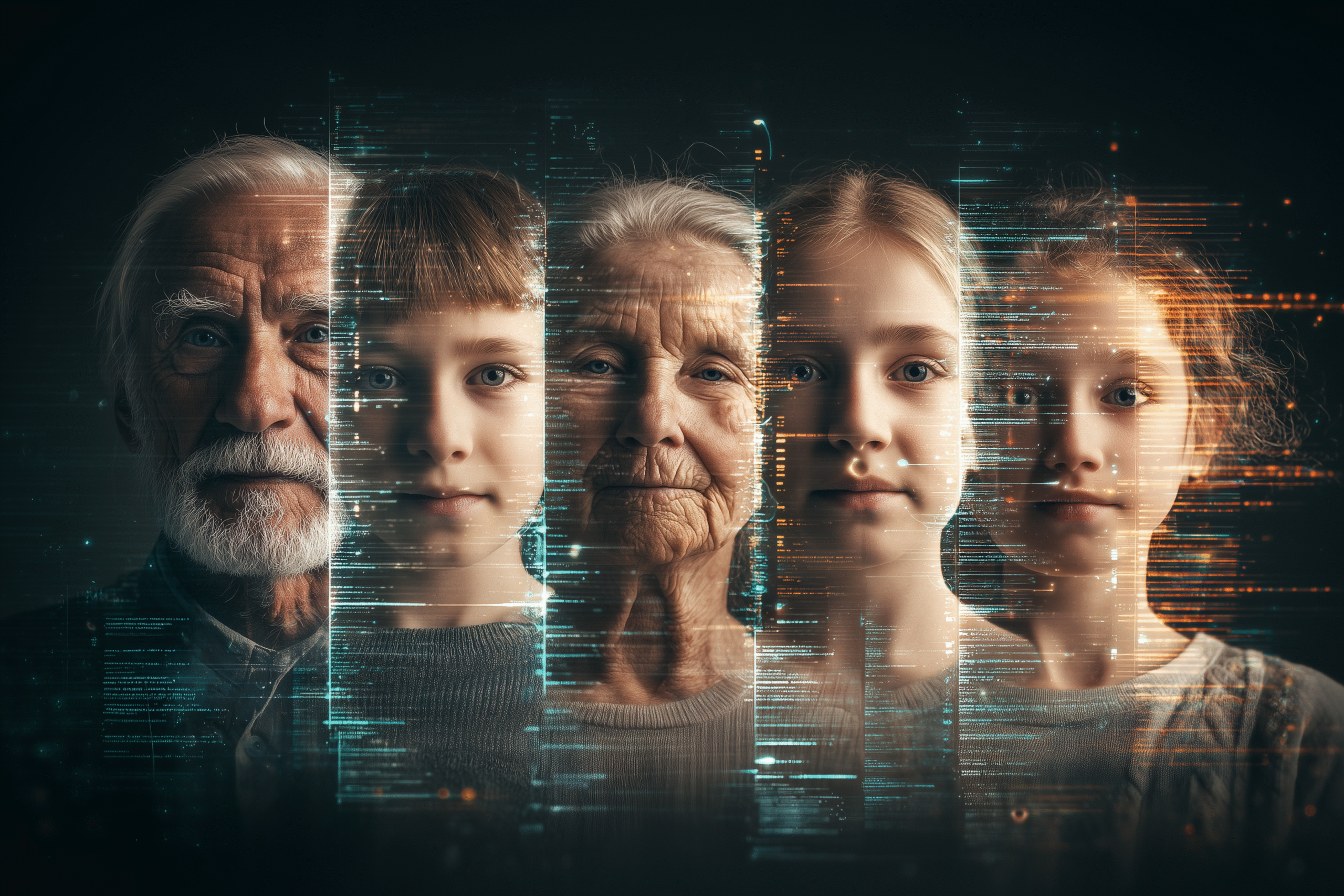Your body sends thousands of signals every day — but until now, you’ve missed most of them.
Note: This article is for educational and informational purposes only. See full disclaimer at the end.
A little while back, a friend shared something that stopped me in my tracks: “My Apple Watch told me I had an irregular heart rhythm,” he said. “I felt fine, but decided to get it checked. Turns out I had atrial fibrillation that could have led to a stroke.”
His story isn’t unique. Around the world, people are uncovering health insights through AI-powered tools — insights that would have gone unnoticed just a few years ago.
The technology quietly monitors, learns patterns, and alerts us to changes that our conscious awareness simply cannot detect.
This is the AI health revolution: not replacing human judgment, but amplifying our body’s natural intelligence with computational precision.
Beyond the Fitness Tracker
We’re living through the most significant transformation in personal health monitoring since the invention of the thermometer. But most people are still using AI health tools like glorified pedometers—counting steps and calories without understanding the deeper intelligence these systems can provide.
The real power of AI in health isn’t in tracking — it’s in pattern recognition, signal detection, and translating your body’s continuous data stream into actionable insight.
As we explored through the signal intelligence framework, your body already runs on a dense network of feedback loops. AI doesn’t replace this — it decodes it.
Consider the revolutionary capability that already exists in your pocket: your smartphone can now detect irregular heart rhythms with greater accuracy than most emergency room EKGs [1]. Wearable devices can identify early signs of illness days before symptoms appear [2]. Sleep tracking has evolved from “you got 7 hours” to detailed analysis of sleep architecture, recovery metrics, and optimization recommendations [3].
But here’s what most people miss: these tools aren’t just collecting data — they’re forming a new partnership between human intuition and artificial intelligence that can transform how we understand and optimize our health.
The AI-Augmented Wellness Stack
Think of AI health tools as creating three interconnected layers of intelligence.
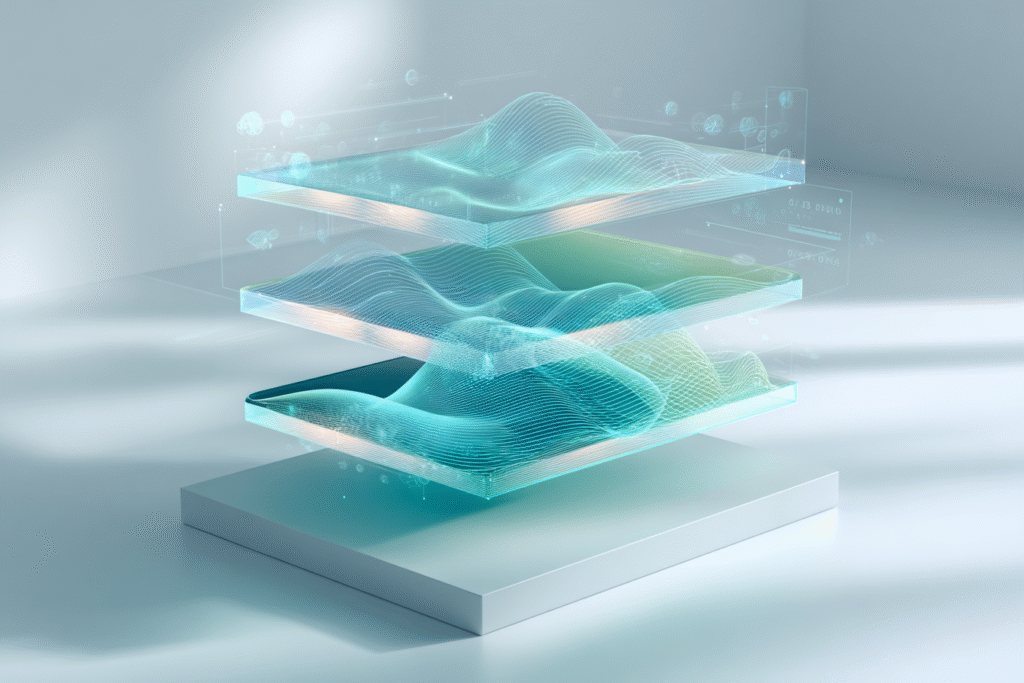
Layer 1: Pattern Recognition
Your AI health systems learn your unique biological patterns—your normal heart rate variability, your typical sleep cycles, your standard energy patterns throughout the day. When something deviates from your personal baseline, the system flags it for attention.
This isn’t about comparing you to population norms — it’s about noticing what’s different for you.
Layer 2: Amplifying What You’d Otherwise Miss
Remember the signal detection principles we’ve been exploring? AI amplifies the subtle signals your body is already sending. That slight increase in resting heart rate might correlate with the early stages of illness.
That change in sleep pattern might indicate increased stress or the need for recovery. The AI helps you notice what you might otherwise miss.
Layer 3: Connecting the Dots Between Signals
Advanced AI health systems don’t just track individual metrics—they understand the relationships between different biological signals. How does your sleep quality affect your heart rate variability? How do your stress levels correlate with your recovery metrics?
This contextual understanding provides insights no single metric could reveal.
These three layers form the foundation of a truly intelligent health system — one designed to adapt to you.
But what does this actually look like in the real world?
AI Health Applications That Actually Work
Let me share the AI health tools and applications that are providing real value today—not science fiction, but practical technologies you can implement now.
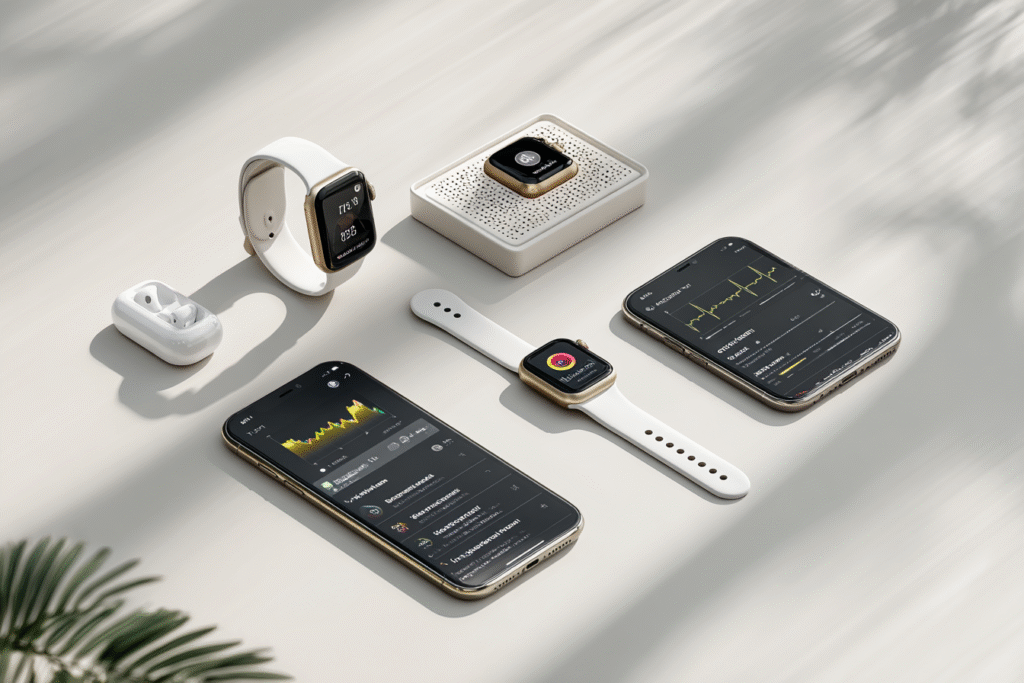
Heart Health Monitoring
Apple Watch and similar devices now offer FDA-approved atrial fibrillation detection [4]. The AI analyzes heart rhythm patterns continuously and can identify irregular rhythms that might otherwise go unnoticed. While not a replacement for medical diagnosis, it’s catching potentially serious conditions early.
Sleep Optimization
Modern sleep tracking goes far beyond counting hours. AI systems like those in Oura rings or WHOOP straps analyze sleep stages, heart rate variability, and recovery metrics to provide personalized recommendations for optimizing sleep quality [5]. The AI learns your patterns and can predict when you need more recovery or when you’re primed for peak performance.
Stress and Recovery Analysis
Heart rate variability (HRV) analysis powered by AI can provide real-time insights into your autonomic nervous system state. Apps like HeartMath use AI to help you train your heart rhythm patterns for improved stress resilience [6]. This isn’t pseudoscience—it’s measurable biometric optimization.
Early Illness Detection
Wearable devices are now sophisticated enough to detect early signs of illness — often before symptoms appear. Changes in resting heart rate, sleep patterns, and activity levels can signal that your immune system is beginning to fight something off [7].
Nutrition and Metabolic Tracking
Continuous glucose monitors, originally designed for diabetics, are now being used by health-conscious individuals to understand how different foods affect their blood sugar patterns. AI analysis of this data can reveal optimal eating windows, food combinations, and meal timing for stable energy throughout the day [8].
These applications represent just the beginning. But the real transformation happens when you understand your role in this new ecosystem.
The Human-AI Health Partnership
AI doesn’t replace your judgment — it enhances it. You remain the intelligent system architect, translating data into meaningful choices.
AI provides enhanced information, pattern recognition, and signal amplification—but you provide context, judgment, and action.
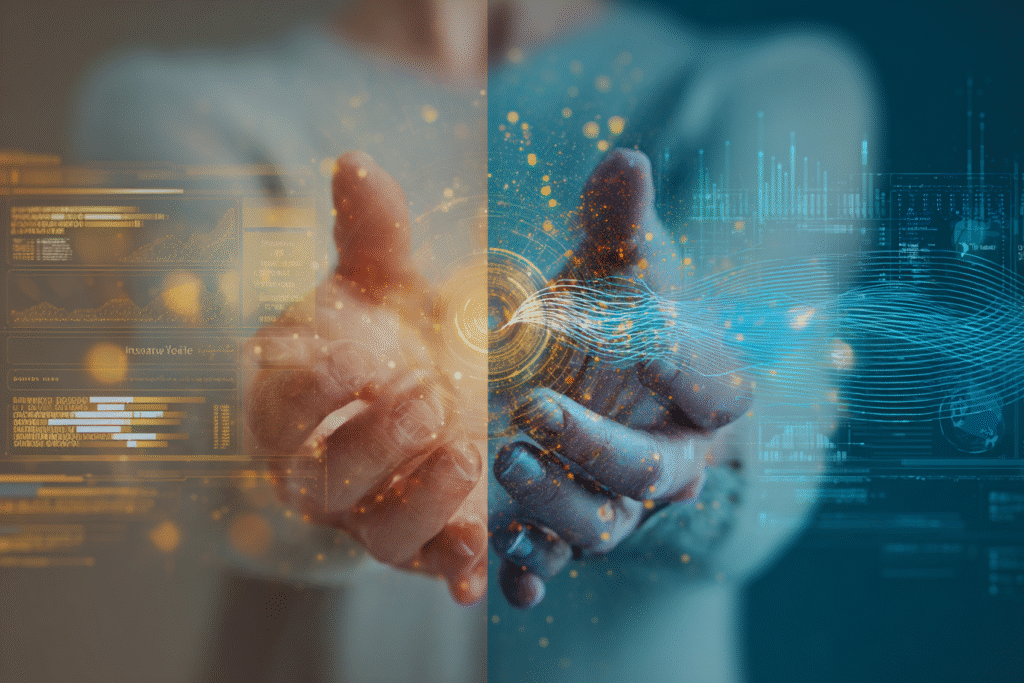
Here’s how to think about this partnership:
AI as Your Health Research Assistant
Instead of spending hours researching symptoms or health optimization strategies, AI can quickly analyze vast amounts of medical literature and provide you with evidence-based information relevant to your specific situation. Tools like AI-powered health research platforms can help you ask better questions when you talk to healthcare providers.
AI as Your Pattern Recognition System
Your AI health tools become increasingly accurate at recognizing your personal patterns and detecting meaningful deviations. But you provide the context—you know when you’ve been under unusual stress, when you’ve changed your diet, or when external factors might be affecting your metrics.
AI as Your Optimization Coach
Advanced AI health systems can suggest personalized optimizations based on your data patterns. They might recommend optimal workout timing based on your recovery metrics, suggest the best sleep schedule based on your chronotype, or identify foods that consistently improve your energy levels.
These roles — research assistant, pattern recognizer, optimization coach — are powerful. But how do you begin building that kind of system for yourself?
Let’s break it down.
Practical Implementation: Your AI Health Stack
If you’re ready to begin leveraging AI for health optimization, here’s how to start — one layer at a time.
Week 1-2: Start Simple, Single-Metric Tracking
Begin with one AI-powered health metric that aligns with your primary health goal. If you’re focused on cardiovascular health, start with heart rate variability tracking. If sleep optimization is your priority, invest in an AI-powered sleep tracking system.
Week 3-4: Add Context Layers
Once you’re comfortable with basic tracking, add complementary metrics that provide context. If you’re tracking sleep, add stress metrics. If you’re monitoring heart health, include activity and recovery data.
Week 5-8: Develop Your Personal Health Protocol
Use the AI insights to develop personalized health protocols. When does your data suggest you should exercise? What sleep schedule optimizes your recovery? How do different foods affect your energy and metabolic markers?
Ongoing: Create Feedback Loops
The real power emerges when you create feedback loops between AI insights and behavioral changes. Test the AI recommendations, measure the results, and refine your approach based on what actually works for your unique biology.

The Cautions We Must Remember
As we embrace AI health optimization, we must remain aware of important limitations and potential pitfalls.
Data Is Not Diagnosis
AI health tools provide valuable information, but they cannot replace professional medical diagnosis and treatment. Unusual patterns warrant attention and potentially professional consultation, but they don’t constitute medical emergencies on their own.
Individual Variation
AI health systems work best when they learn your personal patterns over time. Population-based averages and generic recommendations may not apply to your unique biology and circumstances.
Technology Dependence
The goal is to enhance your body’s natural intelligence, not replace your intuition and judgment. When metrics start replacing your inner knowing, it’s time to recalibrate. AI is a compass, not a conscience.
Privacy and Data Security
Your health data is among the most sensitive information you possess. Ensure you understand how your data is being stored, shared, and protected by AI health platforms.
When used thoughtfully, these limitations become strengths. The need for professional medical consultation creates better healthcare partnerships. Individual variation means your optimization becomes truly personalized. And maintaining your intuition alongside data creates a more holistic approach to health than either could provide alone.
The Signal Intelligence Connection
Remember the signal detection framework we explored previously? AI health optimization is the practical application of these principles:
- Signal Awareness: AI helps you notice subtle biological signals you might otherwise miss
- Pattern Recognition: Machine learning identifies meaningful patterns in your biological data
- Noise Filtering: AI distinguishes between meaningful health signals and random biological variation
- Predictive Intelligence: Advanced systems can predict health outcomes based on pattern analysis
- Optimization Feedback: AI provides real-time feedback to help you optimize your health choices
Together, these five principles redefine what it means to be in tune with your body — not just instinctually, but intelligently.
We’ve explored the architecture, the tools, and the potential risks. Now it’s time to step into the most important layer: you.

Your AI Health Evolution
We’ve mapped the terrain. Now it’s time to decide how you’ll walk it.
The AI health revolution isn’t coming—it’s already here.
The question is whether you’ll use these tools reactively, waiting for problems to emerge, or proactively, optimizing your health before issues develop.
Start where you are. Choose one area that matters most — sleep, stress, exercise, nutrition — and explore how AI tools can enhance your results. You don’t need everything at once. You just need to start.
But remember: the goal isn’t perfect data or complete optimization. It’s about developing a more sophisticated relationship with your body’s intelligence, using AI as a translation system between your biological signals and your conscious awareness.
Tomorrow, we’ll explore how to protect that intelligence — and why personal health sovereignty may be the most important freedom of the AI age. Because even the most advanced tools are meaningless without aligned action.
The revolution has begun. Your body has been waiting. Listening begins the moment you decide to become the most intelligent system in your life.
Because the real revolution isn’t in the algorithm — it’s in your awareness.
See you in the next insight.
Comprehensive Medical Disclaimer: The insights, frameworks, and recommendations shared in this article are for educational and informational purposes only. They represent a synthesis of research, technology applications, and personal optimization strategies, not medical advice. Individual health needs vary significantly, and what works for one person may not be appropriate for another. Always consult with qualified healthcare professionals before making any significant changes to your lifestyle, nutrition, exercise routine, supplement regimen, or medical treatments. This content does not replace professional medical diagnosis, treatment, or care. If you have specific health concerns or conditions, seek guidance from licensed healthcare practitioners familiar with your individual circumstances.
References
- Buda, K. G., Sengupta, J. (2024). “Smartwatches and Atrial Fibrillation: What Works and What Needs Improvement?” American College of Cardiology. Retrieved from https://www.acc.org/latest-in-cardiology/articles/2024/05/29/16/56/smartwatches-and-atrial-fibrillation
- Jafleh, R., et al. (2024). “The Role of Wearable Devices in Chronic Disease Monitoring and Patient Care: A Comprehensive Review.” PMC. Retrieved from https://pmc.ncbi.nlm.nih.gov/articles/PMC11461032/
- Sleep Foundation. (2025). “Best Sleep Trackers of 2025: Data That Matters.” Retrieved from https://www.sleepfoundation.org/best-sleep-trackers
- Samsung News. (2024). “Samsung Announces FDA-Cleared Irregular Heart Rhythm Notification for Galaxy Watch.” Retrieved from https://news.samsung.com/us/fda-cleared-irregular-heart-rhythm-notification-for-galaxy-watch/
- Svensson, T., et al. (2024). “Validity and reliability of the Oura Ring Generation 3 (Gen3) with Oura sleep staging algorithm 2.0 (OSSA 2.0) when compared to multi-night ambulatory polysomnography.” Sleep Medicine, 115, 251-263. Retrieved from https://www.mdpi.com/1424-8220/24/20/6532
- Harvard Health Publishing. (2023). “What’s the latest on wearables for finding atrial fibrillation?” Retrieved from https://www.health.harvard.edu/heart-health/whats-the-latest-on-wearables-for-finding-atrial-fibrillation
- Zhang, Y. T., et al. (2023). “Towards wearable sensing-based precise and rapid responding system for the early detection of future pandemic.” Connected Health and Telemedicine, 2, 200007. Retrieved from https://www.oaepublish.com/articles/chatmed.2023.02
- Jarvis, P. R. E., et al. (2023). “Continuous glucose monitoring in a healthy population: understanding the post-prandial glycemic response in individuals without diabetes mellitus.” Metabolism, 146, 155640. Retrieved from https://www.sciencedirect.com/science/article/pii/S0026049523002445

